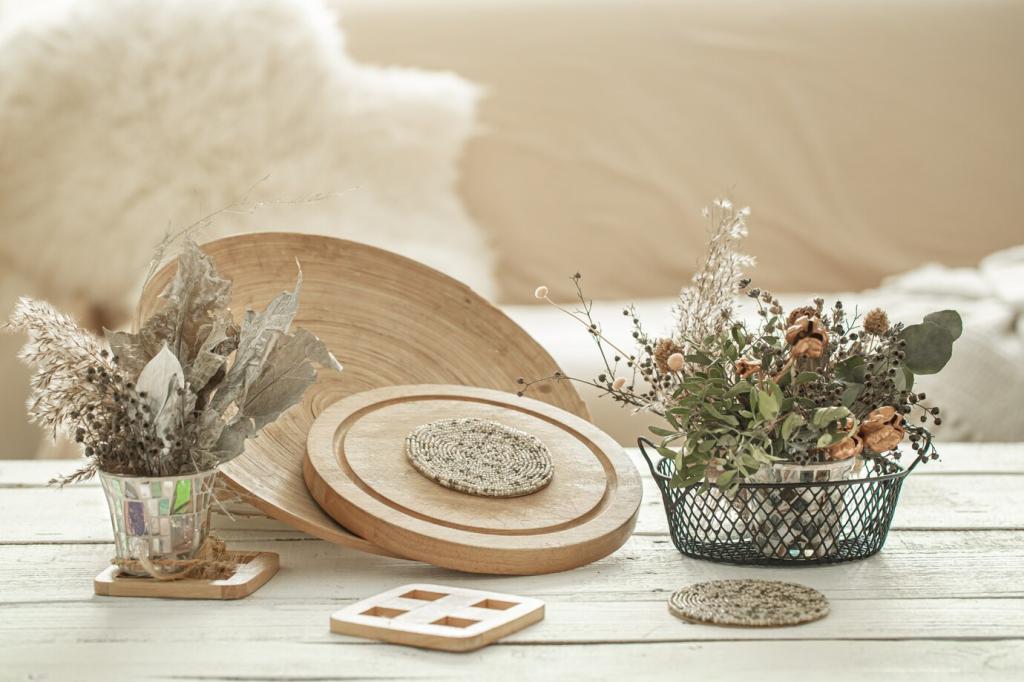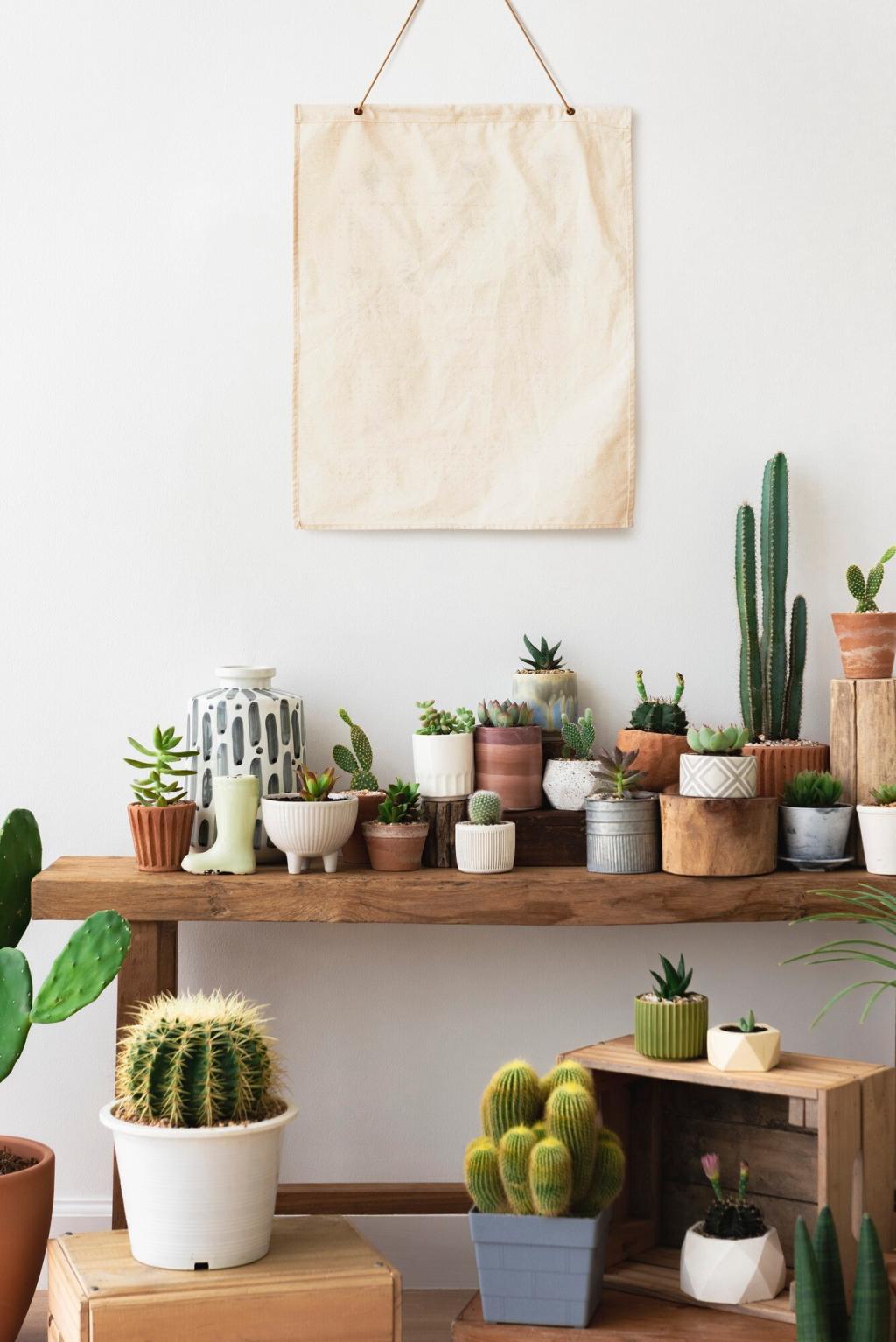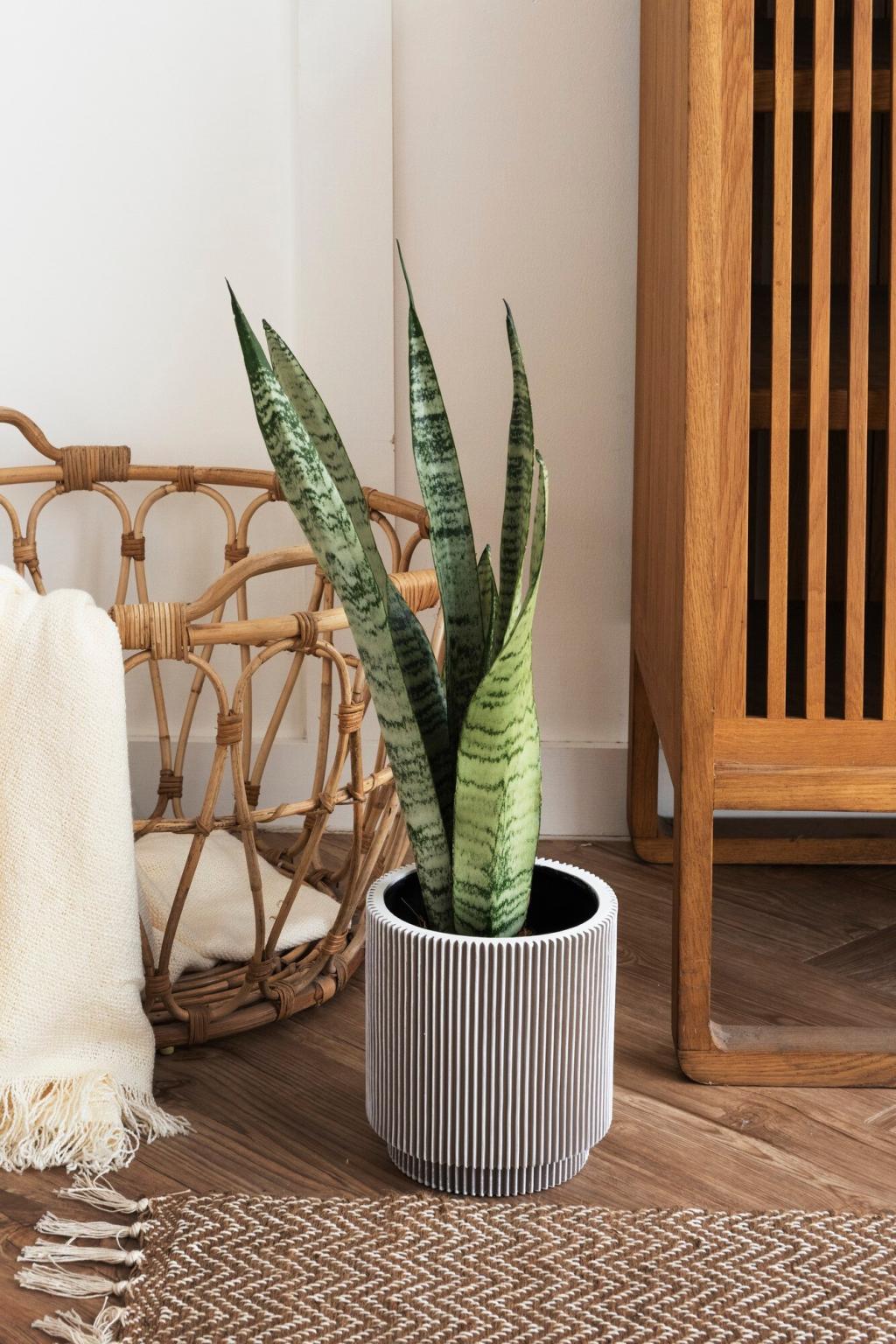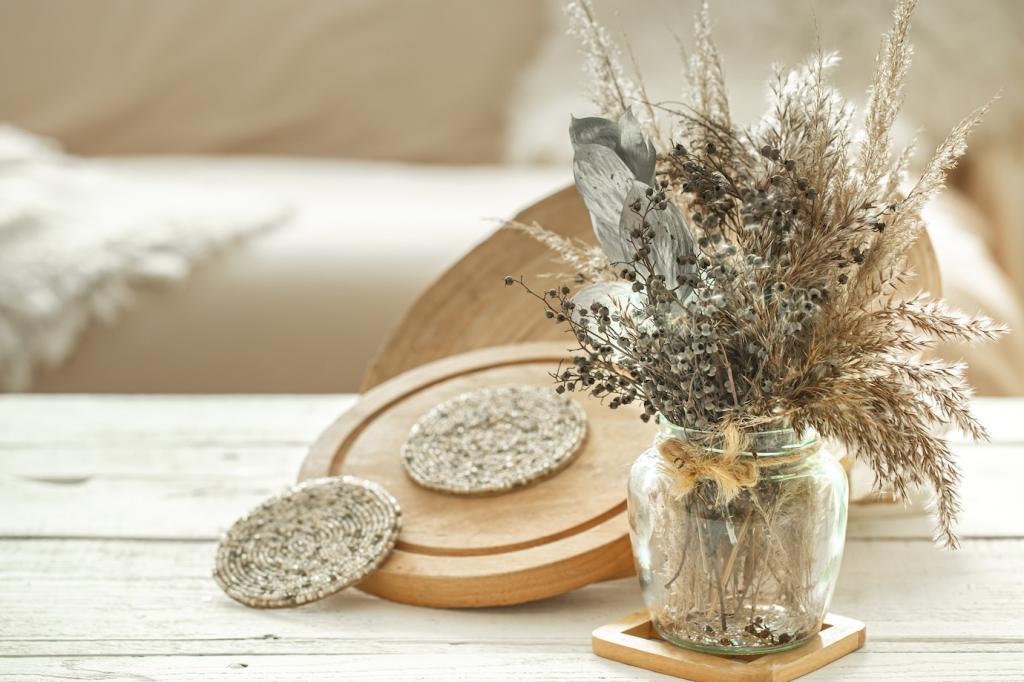Why Green Materials Matter in Every Room
Every countertop, paint coat, and textile carries a story—resource extraction, energy use, and transport. Focusing on recycled content, renewable sources, and low embodied carbon turns that story into a positive one. Begin by asking suppliers for Environmental Product Declarations and lifecycle data, and prioritize materials that balance durability with a clear path to responsible reuse.
Why Green Materials Matter in Every Room
Indoor air can be more polluted than outdoor air, especially after renovations. Low-VOC finishes, sealants, and adhesives reduce irritants and odors. A designer once told me a client slept better the week they removed a high-VOC carpet and switched to natural wool—proof that health-forward choices transform interiors into restorative, breathable sanctuaries.




